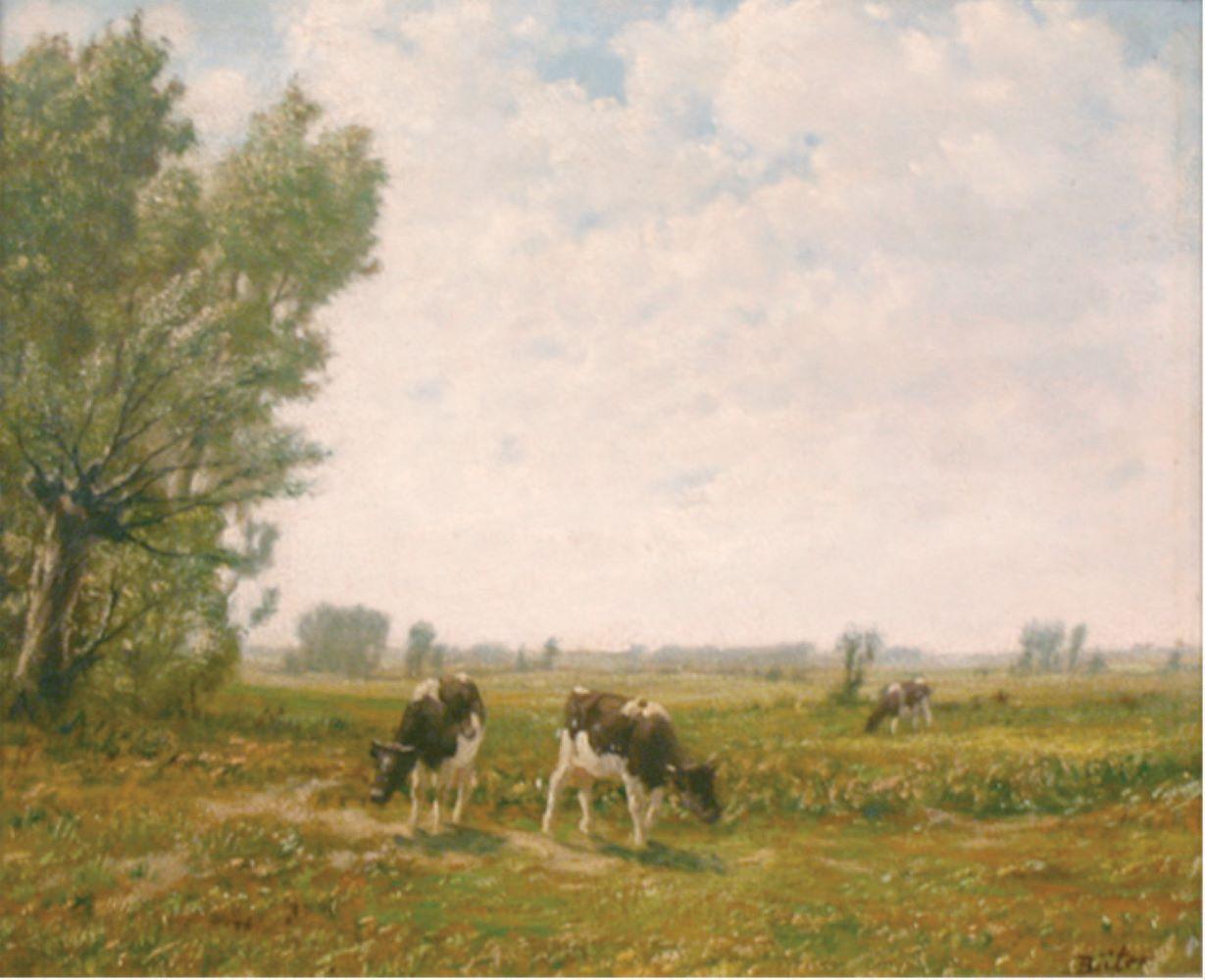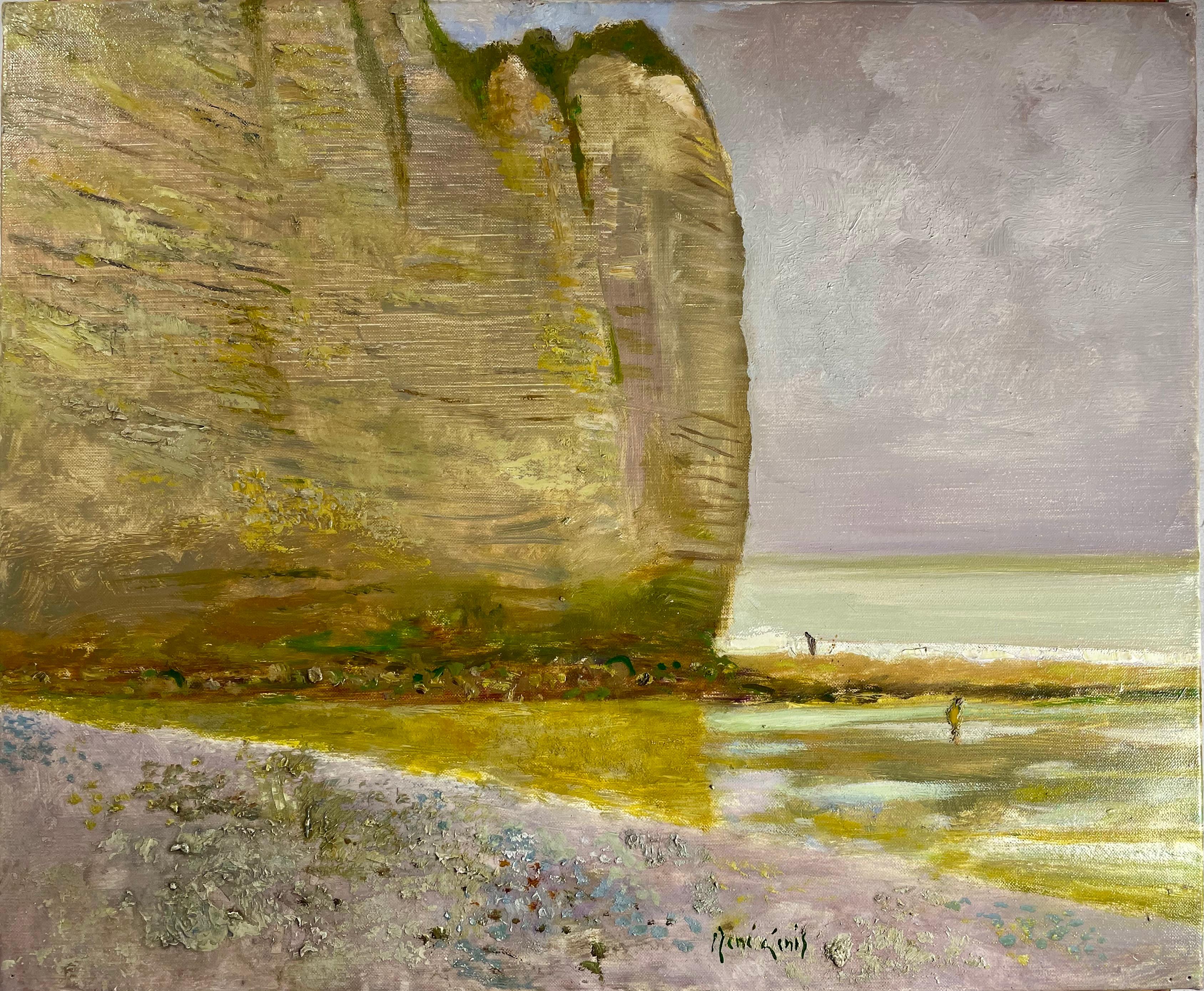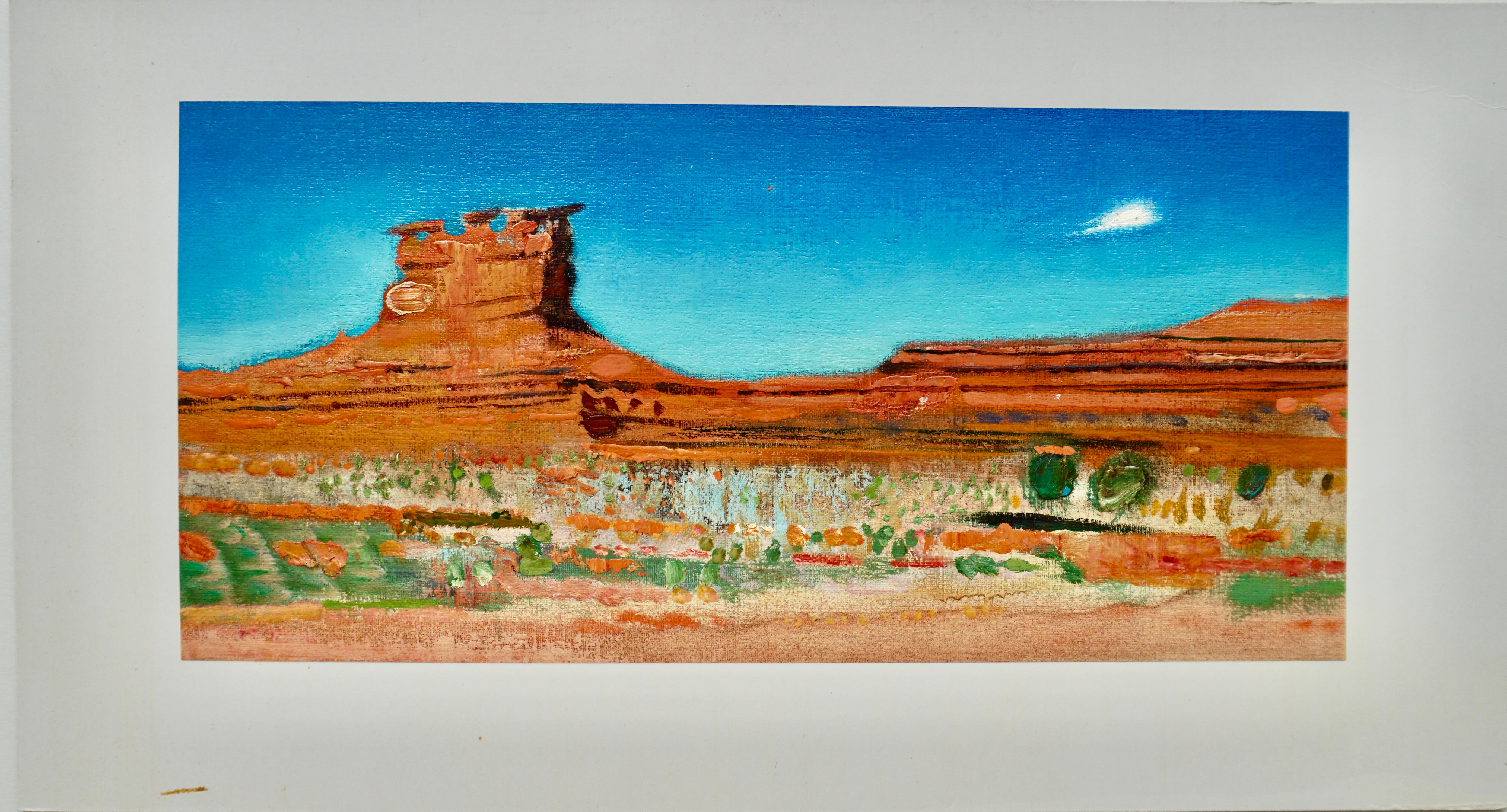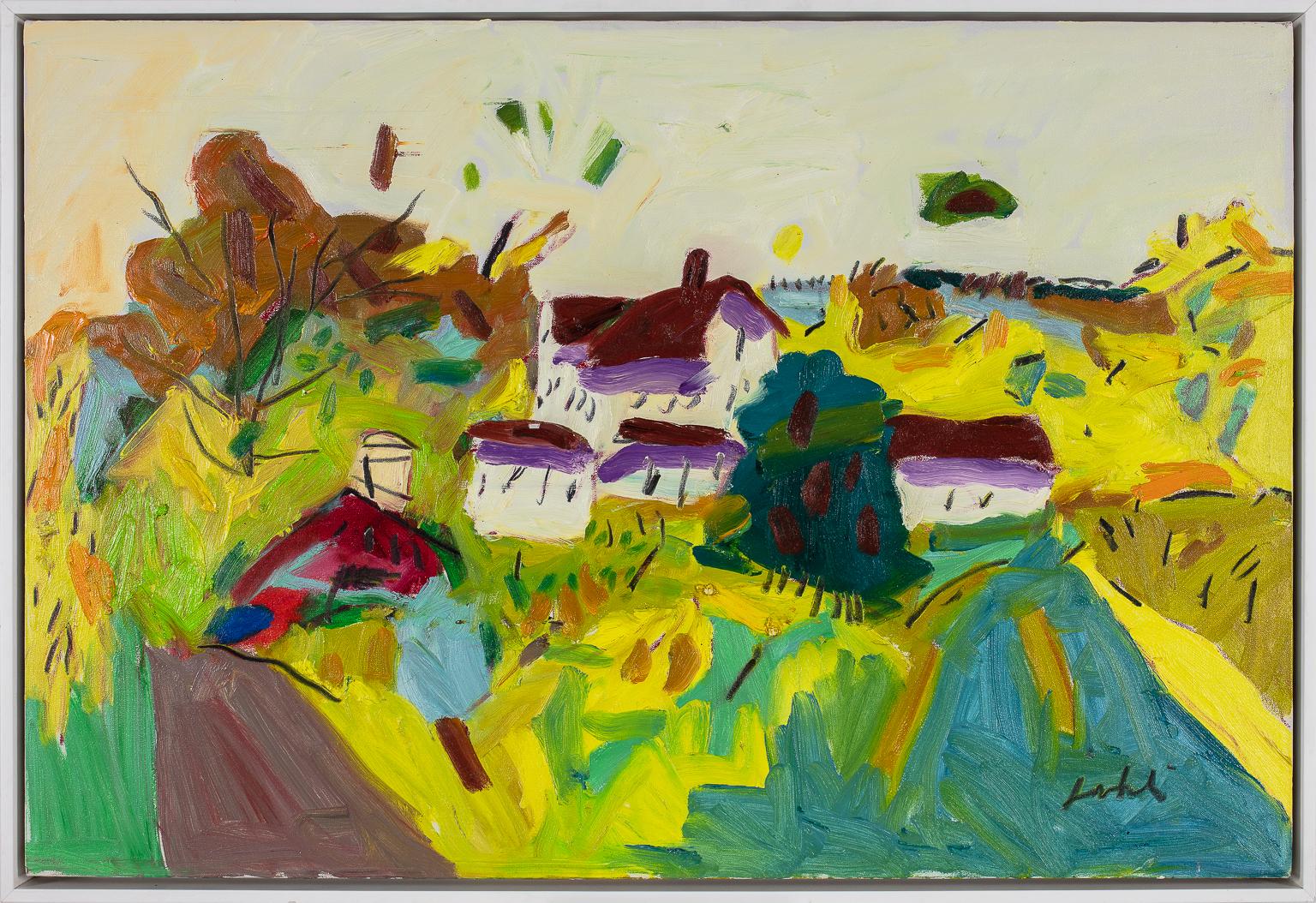Items Similar to Winter's Day
Want more images or videos?
Request additional images or videos from the seller
1 of 5
John TerelakWinter's Day2022
2022
About the Item
John Terelak Biography
American, b. 1942
John Charles Terelak is recognized as one of America's finest living impressionists. Born in Boston, Massachusetts, he received formal art instruction at the Vesper George School of Fine Art. Terelak's love of paint and canvas and his thorough understanding of color theory and paint technique eventually led him to become Headmaster of the Gloucester Academy of Fine Art. As demand for his work grew, it eventually became necessary for John to devote his full energies to the creation of his own paintings. Since making that decision he has enjoyed outstanding and continuing success in his career. His professional career at the easel now spans more than three decades. In addition to his beautiful work in oil, Terelak is also a master in watercolor and pastel. He is also a past President of The New England Watercolor Society.
While the subject matter of Terelak's paintings is as diverse as the world in which he lives, the 'Terelak touch' is unmistakable in each of his works. An intricate system of layered paint and glazing, incredible use of color, and rich surface texture are hallmarks of his paintings. He has a gift for observation and the ability to paint with both freshness and emotion. His paintings may capture the tranquility of an early spring morning in the Vermont countryside, the beaches of Cape Cod in the summer, a woman hanging her laundry, the great harbors of New York, the hustle and bustle of Times Square, or the serenity of the French countryside. John does a considerable amount of location work. He loves to set his easel up in the woods and chase the passing light with his brush and paints. While exercising appropriate creative license, he documents the beauty of his surroundings and posterity is somewhat the richer for every canvas he completes.
Terelak once said, "I've been painting for over twenty-five years, and after all that time, I still love to paint. I get enormous pleasure just from the smell of paint and turpentine, from the actual physical process of mixing paints and applying them to the canvas. I'm a very intense painter, and I'm certainly a 'messy' painter, but at the same time I'm also very patient and painstaking. I take a long time with my paintings, working and reworking them, adding layer after layer of paint, and glazing the surface again and again. I want the actual surface of the canvas to have a rich patina, a depth and texture that is beautiful in its own right, quite independent of the images and colors involved. Actually, whether I'm painting Monet's garden at three in the afternoon, or Times Square at three in the morning, the real content of my work is color and light. What I'm really doing is playing off one color against another, creating color harmonies that evoke different moods and feelings. I've been called an American traditionalist and impressionist, but those are just labels. In fact, the only thing that really matters is the work itself, and the feelings the work produces.”
The reception Terelak's work has received from serious collectors is strong evidence that his paintings will be recognized as an important and permanent part of the best of American fine art created in this century. His paintings are included in thousands of private and public collections throughout the United States. Included are the Andrew Mellon Foundation, Sheraton Corporation, Winthrop Financial Corporation, Prudential Insurance Company, Bank of Boston, Shawmut Bank, State Street Bank, Boston, and Sterling-Regal Publishing Company. Included among Terelak's private collectors are many prominent persons from the business world, the entertainment and sports industries, and perhaps most significantly of all, the art community itself. John Terelak has had a number of successful one-man shows. His works have been included in exhibitions at The National Academy of Design, The Boston Museum of Fine Arts, The Springfield Museum, and The Butler Museum, among others.
- Creator:John Terelak (1942, American)
- Creation Year:2022
- Dimensions:Height: 24 in (60.96 cm)Width: 30 in (76.2 cm)
- Medium:
- Period:
- Condition:
- Gallery Location:Greenwich, CT
- Reference Number:1stDibs: LU18110875372
About the Seller
4.7
Vetted Seller
These experienced sellers undergo a comprehensive evaluation by our team of in-house experts.
Established in 1986
1stDibs seller since 2013
161 sales on 1stDibs
Typical response time: 2 hours
- ShippingRetrieving quote...Ships From: Greenwich, CT
- Return PolicyA return for this item may be initiated within 3 days of delivery.
More From This SellerView All
- Forest Series - Warm SunBy Ira BarkoffLocated in Greenwich, CT“My hope is to transcend the natural world by bringing to life something deeper and more elusive than outward appearances. A given group of trees or a field is imbued with something ...Category
2010s Contemporary Landscape Paintings
MaterialsOil, Canvas
- Day is Done, the Coast of MaineBy Joseph McGurlLocated in Greenwich, CTJoseph McGurl is regarded as a leader of the current American landscape school. This has been confirmed by his inclusion in several important museum shows and his successful relation...Category
2010s American Realist Landscape Paintings
MaterialsCanvas, Oil
- Purple SkyBy Maureen ChatfieldLocated in Greenwich, CTAmerican, b. 1948 Artist Statement: My paintings are intuitive responses to the myriad forces that shape my life—emotions that translate into color, visual memories of forms and col...Category
2010s Color-Field Landscape Paintings
MaterialsCanvas, Oil
- The PathBy Maureen ChatfieldLocated in Greenwich, CTAmerican, b. 1948 My paintings are intuitive responses to the myriad forces that shape my life—emotions that translate into color, visual memories of forms and color relationships f...Category
2010s Color-Field Landscape Paintings
MaterialsOil, Canvas
- Two Pink RoofsBy Maureen ChatfieldLocated in Greenwich, CTAmerican, b. 1948 My paintings are intuitive responses to the myriad forces that shape my life—emotions that translate into color, visual memories of forms and color relationships f...Category
2010s Contemporary Landscape Paintings
MaterialsCanvas, Oil
- Along the SurfBy Frank CorsoLocated in Greenwich, CTFrank Corso Biography American, b. 1952 Frank Corso was born in Syracuse, New York. Taking a keen interest in art at a very early age, he was inspired to draw and paint the landscap...Category
2010s American Realist Landscape Paintings
MaterialsCanvas, Oil
You May Also Like
- Bernhard ButerLocated in Saint Augustine, FLArtist: Bernhard Buter (1883-1959) German Title: Rhinish Landscape Medium: Oil on Canvas Dimensions: Framed 19” x 21” , Unframed 11 x 13” Bernhard Buter paints agrarian landscapes i...Category
Early 20th Century Realist Landscape Paintings
MaterialsCanvas, Oil
- "Les Falaise Normande" (The Cliffs Of Normand)By René GenisLocated in Berlin, MDRene Genis (French 1922-2004) “Les Falaise Normande” / The Cliffs of Normand. A sea scape with high cliffs, the beach, and two fishermen. The cliffs are in browns, tans and olives a...Category
1990s French School Landscape Paintings
MaterialsCanvas, Oil
- "Monument Valley"By René GenisLocated in Berlin, MDRene Genis (French 1922-2004) Monument Valley. 1967. Beautiful oranges, browns, greens against a turquoise blue sky. Oil on canvas, laid on mat. Si...Category
Mid-20th Century Landscape Paintings
MaterialsOil, Canvas
- Early oil depicting the Great Fire of LondonLocated in London, GBThe Great Fire of London in September 1666 was one of the greatest disasters in the city’s history. The City, with its wooden houses crowded together in narrow streets, was a natural fire risk, and predictions that London would burn down became a shocking reality. The fire began in a bakery in Pudding Lane, an area near the Thames teeming with warehouses and shops full of flammable materials, such as timber, oil, coal, pitch and turpentine. Inevitably the fire spread rapidly from this area into the City. Our painting depicts the impact of the fire on those who were caught in it and creates a very dramatic impression of what the fire was like. Closer inspection reveals a scene of chaos and panic with people running out of the gates. It shows Cripplegate in the north of the City, with St Giles without Cripplegate to its left, in flames (on the site of the present day Barbican). The painting probably represents the fire on the night of Tuesday 4 September, when four-fifths of the City was burning at once, including St Paul's Cathedral. Old St Paul’s can be seen to the right of the canvas, the medieval church with its thick stone walls, was considered a place of safety, but the building was covered in wooden scaffolding as it was in the midst of being restored by the then little known architect, Christopher Wren and caught fire. Our painting seems to depict a specific moment on the Tuesday night when the lead on St Paul’s caught fire and, as the diarist John Evelyn described: ‘the stones of Paul’s flew like grenades, the melting lead running down the streets in a stream and the very pavements glowing with the firey redness, so as no horse, nor man, was able to tread on them.’ Although the loss of life was minimal, some accounts record only sixteen perished, the magnitude of the property loss was shocking – some four hundred and thirty acres, about eighty per cent of the City proper was destroyed, including over thirteen thousand houses, eighty-nine churches, and fifty-two Guild Halls. Thousands were homeless and financially ruined. The Great Fire, and the subsequent fire of 1676, which destroyed over six hundred houses south of the Thames, changed the appearance of London forever. The one constructive outcome of the Great Fire was that the plague, which had devastated the population of London since 1665, diminished greatly, due to the mass death of the plague-carrying rats in the blaze. The fire was widely reported in eyewitness accounts, newspapers, letters and diaries. Samuel Pepys recorded climbing the steeple of Barking Church from which he viewed the destroyed City: ‘the saddest sight of desolation that I ever saw.’ There was an official enquiry into the causes of the fire, petitions to the King and Lord Mayor to rebuild, new legislation and building Acts. Naturally, the fire became a dramatic and extremely popular subject for painters and engravers. A group of works relatively closely related to the present picture have been traditionally ascribed to Jan Griffier...Category
17th Century Old Masters Landscape Paintings
MaterialsOil, Canvas
- Two Pink Trees in a Yellow FieldBy Zygmund JankowskiLocated in Gloucester, MAZygmund Jankowski (1925–2009) painted traditional subjects with exuberant irreverence for traditional rules of color, composition, and perspective. He disparaged imitation and deligh...Category
1980s Contemporary Landscape Paintings
MaterialsCanvas, Oil
- Flat Ledge Quarry with Golden TreesLocated in Gloucester, MAFlat Ledge Quarry is one of the many granite quarries in Rockport MA, which actively produced granite for cobblestones until the early 20th century, when asphault became the preferre...Category
2010s Contemporary Landscape Paintings
MaterialsCanvas, Oil





